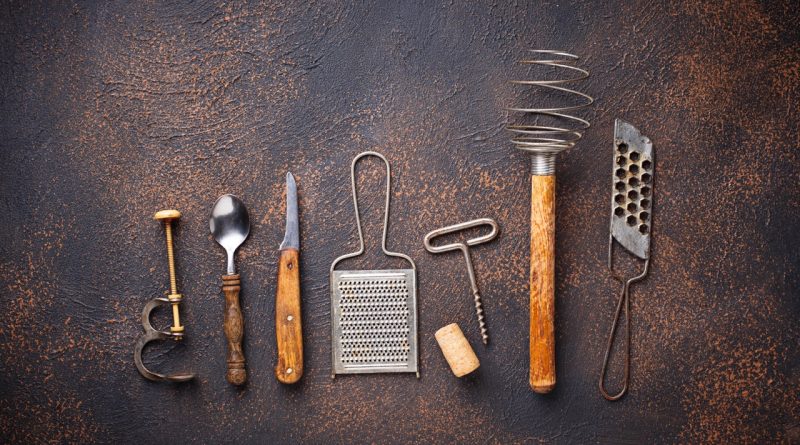The Chemistry Of Zwilling’s Nonstick Coatings
Nonstick cookware has revolutionized the culinary world, enabling cooks of all skill levels to create delicious meals with ease. Zwilling, a brand synonymous with quality kitchenware, has developed advanced nonstick coatings that enhance both performance and durability. This article will delve into the chemistry behind Zwilling’s nonstick coatings, exploring the key ingredients that differentiate them from other products, the science of their longevity, and practical care tips to maintain their quality.
Understanding the Basics of Nonstick Coatings in Cookware
Nonstick coatings are designed to reduce friction between the cookware surface and food, preventing sticking and making cooking and cleaning more convenient. The most commonly used nonstick material is polytetrafluoroethylene (PTFE), which is known for its exceptional slipperiness. However, newer formulations, like those found in Zwilling’s offerings, have evolved to include additional components that enhance the nonstick properties while ensuring safety and performance.
Zwilling’s nonstick coatings are crafted to ensure even heat distribution, which is crucial for consistent cooking results. This feature helps eliminate hot spots that can lead to unevenly cooked food. The coatings provide a smooth surface that not only prevents food from adhering but also makes it easier to slide meals onto plates, enhancing the overall cooking experience.
Moreover, the application of these coatings is a delicate process that requires precision and expertise. Zwilling employs advanced technology to bond the nonstick layer to the cookware substrate, ensuring that it remains intact even under rigorous cooking conditions. Understanding these basics is essential to appreciate the complexity and innovation behind Zwilling’s nonstick cookware.
Key Ingredients That Make Zwilling’s Coatings Stand Out
One of the standout features of Zwilling’s nonstick coatings is the use of high-quality, food-safe materials. While PTFE remains a core component, Zwilling enhances its coatings with additional ingredients that improve performance and safety. For instance, the inclusion of ceramic particles can increase durability and resistance to scratching, extending the life of the cookware.
Another ingredient that sets Zwilling apart is the use of reinforced coatings that have been designed to withstand higher temperatures without degrading. This feature is particularly important for avid cooks who may use their pans at high heat. The result is a nonstick surface that remains effective even under challenging cooking conditions, such as searing or frying.
Furthermore, Zwilling prioritizes health and safety by ensuring that their coatings are free from harmful substances such as PFOA (perfluorooctanoic acid), a chemical previously associated with nonstick coatings. By focusing on clean chemistry, Zwilling provides peace of mind to consumers who are increasingly concerned about the safety of their cooking tools.
The Science Behind Durability and Performance in Nonstick
The durability of Zwilling’s nonstick coatings is rooted in advanced chemical engineering. The bonding process used to attach the nonstick layer to the cookware creates a robust and resilient surface that can withstand everyday wear and tear. This is achieved through a combination of thermal processes and precise application techniques that ensure the coating adheres firmly to the base material.
Additionally, Zwilling incorporates a multi-layer construction in its coatings. This approach not only enhances the nonstick properties but also improves durability against scratches and abrasions. Each layer is designed to serve a specific purpose, whether it’s enhancing the nonstick effect or providing extra protection against damage from utensils or high heat.
The performance of Zwilling’s nonstick coatings is further enhanced by their ability to distribute heat evenly. This quality minimizes the risk of hot spots that can lead to food sticking or burning. Understanding the scientific principles behind these coatings helps users appreciate their effectiveness and reinforces the importance of proper care and maintenance.
Practical Care Tips for Maintaining Nonstick Cookware Quality
To ensure the longevity of Zwilling’s nonstick cookware, proper care is essential. First and foremost, avoid using metal utensils that can scratch the nonstick surface. Instead, opt for wooden, silicone, or plastic utensils that are gentle on the coating. This simple change can significantly extend the life of your cookware.
Cleaning is another crucial aspect of maintaining nonstick quality. While Zwilling’s coatings are designed to be easy to clean, it is recommended to wash them by hand with a soft sponge and mild detergent. Avoid abrasive scrubbers that can damage the nonstick layer. For stubborn food residues, soaking the cookware in warm, soapy water can help loosen any stuck-on bits without damaging the surface.
Finally, proper storage is vital to prevent scratches and dents. Stacking nonstick cookware can lead to damage, so consider using pan protectors or storing them separately. By following these care tips, users can ensure that their Zwilling nonstick cookware remains in optimal condition, providing excellent performance for years to come.
In conclusion, Zwilling’s nonstick coatings represent a blend of innovative chemistry and practical design, tailored to enhance both performance and safety in the kitchen. Understanding the components and science behind these coatings allows consumers to make informed choices and maintain their cookware effectively. By following simple care tips, food enthusiasts can enjoy the benefits of Zwilling’s high-quality nonstick cookware, making cooking a more enjoyable experience.
